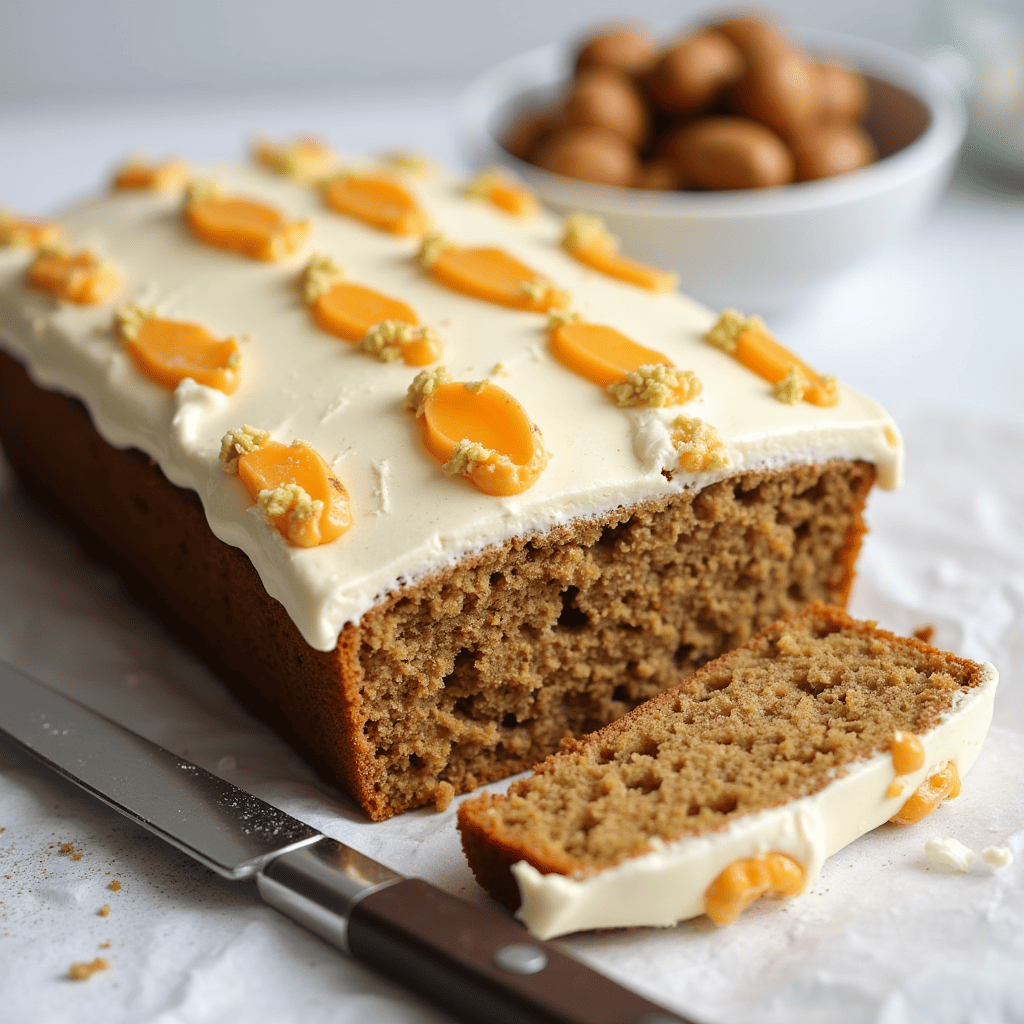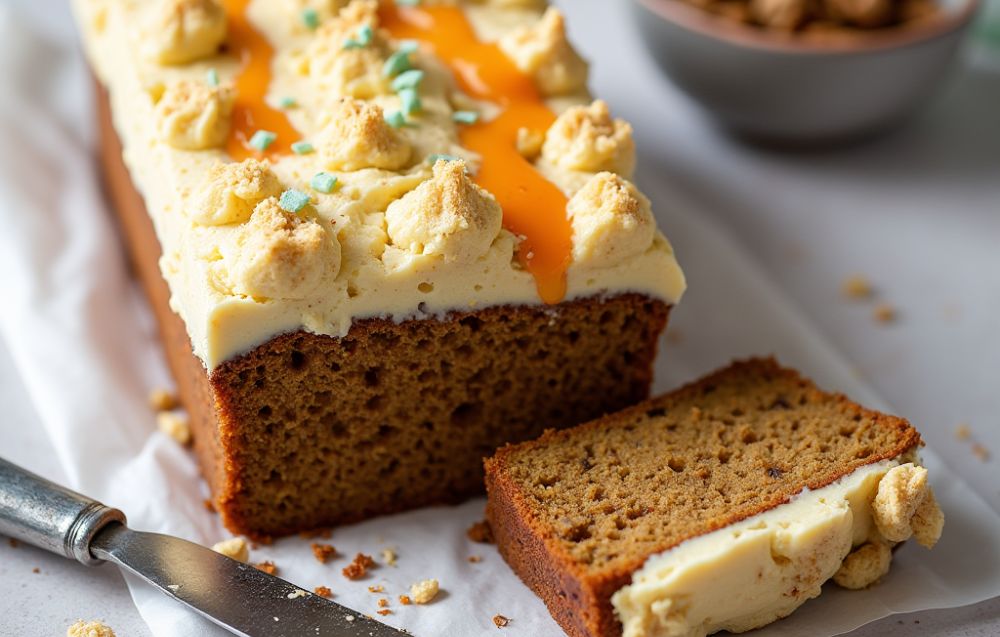When it comes to comfort food, carrot cake has long been a crowd favorite. With its natural sweetness from carrots, paired with spices like cinnamon and nutmeg, it’s a cake that’s hard to resist. But what if you’re avoiding gluten, or you’ve been diagnosed with a gluten sensitivity or intolerance? Can you still indulge in this delicious treat? Absolutely! The beauty of gluten-free carrot cake is that you can have all the flavor and texture of the traditional version, without the gluten.
In this guide, we’ll walk you through everything you need to know about making a mouth-watering gluten-free carrot cake. From choosing the right ingredients to fixing common baking mishaps, we’ve got you covered. Whether you’re a seasoned baker or just dipping your toes into the gluten-free world, you’ll find all the tips and tricks to create the best carrot cake ever.
Introduction: Why Choose a Gluten-Free Carrot Cake?
We all know that cake is a special treat—perfect for birthdays, holidays, or just because. But when you or someone you love is gluten-sensitive, indulging in cake can be tricky. Gluten, found in wheat, barley, and rye, can cause a variety of health issues for people with gluten intolerance or celiac disease. So, what can you do if you have a craving for a moist, flavorful carrot cake, but you need to go gluten-free?
Enter gluten-free carrot cake! This version allows you to enjoy your favorite dessert without the discomfort or health risks associated with gluten. Plus, it’s often made with healthier ingredients like almond flour, coconut oil, and even natural sweeteners, giving you the perfect balance of indulgence and nutrition.
Why Choose Gluten-Free Carrot Cake?
- Healthier Option: Many gluten-free recipes for carrot cake use natural sweeteners like honey, maple syrup, or coconut sugar, cutting back on refined sugars.
- Digestive Comfort: For those with gluten sensitivities, gluten-free carrot cake can be a digestive-friendly alternative to traditional recipes.
- Flexibility: It’s incredibly easy to modify the recipe to suit other dietary needs—dairy-free, sugar-free, vegan, you name it!
So, now that you understand why you might opt for a gluten-free version, let’s dive into the fundamentals of what makes a great gluten-free carrot cake.
What Is Gluten-Free Carrot Cake?
A gluten-free carrot cake is essentially the same as a traditional carrot cake, except it’s made without any wheat flour or ingredients that contain gluten. Instead, it relies on gluten-free alternatives to ensure the cake maintains the same delicious taste and texture.
What Is Gluten and Why Avoid It?
Before we get into the recipe, let’s talk about why some people need to avoid gluten. Gluten is a group of proteins found in wheat, barley, rye, and some other grains. While it’s harmless for most people, it can cause serious digestive issues, discomfort, and inflammation in people with celiac disease or gluten sensitivity.
For those avoiding gluten, the key is to find substitute ingredients that maintain the cake’s structure, flavor, and moistness—without sacrificing the quality of the end product. And that’s exactly what we’ll focus on as we walk through the gluten-free carrot cake recipe.
The Basics of Gluten-Free Baking
Baking without gluten can be a bit of a science experiment, but don’t worry—we’ve got it all figured out for you. Gluten is what gives traditional cakes their structure and helps them rise. Since we’re working with gluten-free ingredients, you’ll need to replace that structure with a combination of gluten-free flours, binders, and leavening agents.
Here are a few tips when it comes to gluten-free baking:
- Use a Mix of Flours: A single gluten-free flour may not give the best results on its own. Combining rice flour, almond flour, and coconut flour is a great place to start.
- Add Binders: Ingredients like xanthan gum or guar gum are great for binding your ingredients together. They help mimic the elasticity of gluten.
- Don’t Overmix: Gluten-free batters tend to be a little thicker, so you don’t need to mix them as much as you would traditional batters. Overmixing can cause the cake to become too dense or dry.
Now, let’s dive into what really makes gluten-free carrot cake a standout: the ingredients.
Key Ingredients for Gluten-Free Carrot Cake
The key to a successful gluten-free carrot cake lies in using the right combination of ingredients. Thankfully, most of the ingredients used in a carrot cake are naturally gluten-free. The trick is to make sure you choose the right gluten-free flour and additional components that will give the cake the perfect texture.
Best Gluten-Free Flours to Use
Unlike traditional cakes made with wheat flour, gluten-free carrot cake uses an array of flour alternatives. The choice of gluten-free flour can make or break your cake, so here’s a list of the best options:
- Almond Flour: This is a popular gluten-free option that adds moisture and a subtle nutty flavor. It’s perfect for carrot cakes because it doesn’t dry out easily, creating a nice, tender crumb.
- Rice Flour: This flour provides structure and helps hold the cake together. It can be a little gritty on its own, so it’s often best used in combination with other gluten-free flours.
- Coconut Flour: Coconut flour is incredibly absorbent, so it’s often used in smaller quantities. It adds a slight coconut flavor and is a great option for adding fiber to the cake.
- Tapioca Flour: A great flour to help thicken batters and provide structure. It’s often used as a binder when combined with other gluten-free flours.
If you can’t find pre-mixed gluten-free flours, don’t worry! You can create your own mix by combining these different flours in the right proportions.
Sweeteners and Moisture Enhancers in Gluten-Free Carrot Cake
Now, let’s talk about sweeteners. Carrot cake, as we all know, is a sweet treat. But it doesn’t always have to rely on refined sugars. Here are some popular sweeteners used in gluten-free carrot cake recipes:
- Maple Syrup: This natural sweetener adds a delicious depth of flavor that complements the spices in carrot cake. It’s liquid, so it also helps keep the cake moist.
- Honey: Another great option, honey not only sweetens but also adds moisture. Be sure to use it in moderation to avoid making the cake too sweet.
- Coconut Sugar: This is a low-glycemic sweetener that adds a rich, caramel-like flavor. It’s a healthier option than refined white sugar.
Along with the sweeteners, you’ll need ingredients to help keep the cake moist. Carrots are, of course, the star of the show. They’re packed with moisture and natural sweetness. Additionally, oils like coconut oil or olive oil are commonly used in gluten-free baking to keep things moist and tender.
Pro Tip: To really amp up the moistness, consider adding unsweetened applesauce. It works wonders as a moisture enhancer while also helping to naturally sweeten the cake.
The Importance of Eggs and Dairy-Free Substitutes
Eggs play a crucial role in gluten-free baking because they act as both a binder and a leavening agent. If you’re avoiding eggs, there are plenty of egg substitutes that work well in carrot cake, such as:
- Flaxseed Meal: Combine 1 tablespoon of ground flaxseed with 3 tablespoons of water to create an egg-like texture. It works particularly well in moist cakes like carrot cake.
- Chia Seeds: Similar to flaxseeds, chia seeds can be used to replace eggs. Simply grind the seeds and mix with water until it forms a gel-like consistency.
- Applesauce: Not only does it help with moisture, but it can also replace eggs in many baking recipes.
When it comes to dairy-free substitutions, coconut oil is a great alternative to butter, while non-dairy milks like almond milk or oat milk can replace milk in the recipe.

Step-by-Step Recipe for a Perfect Gluten-Free Carrot Cake
Now that we’ve covered the essentials, let’s get down to the fun part—baking your gluten-free carrot cake! Follow this simple step-by-step guide to create a light, moist, and flavorful cake. Whether you’re a first-timer or a seasoned baker, these instructions will help ensure your success.
Preparing the Dry Ingredients
Start by gathering your dry ingredients. This is where you’ll incorporate the key components of your gluten-free flour mix, along with baking soda and spices that will give the carrot cake its signature flavor.
- Gluten-Free Flour Mix: Depending on your choice, you’ll use a mix of almond flour, rice flour, or coconut flour. Measure out about 2 cups.
- Baking Powder & Baking Soda: These will provide the rise you need without the help of gluten. Use about 1 teaspoon of baking powder and 1 teaspoon of baking soda.
- Spices: For the perfect carrot cake flavor, add 1 tablespoon of ground cinnamon, ½ teaspoon of nutmeg, and a pinch of salt. Cinnamon is a must—it’s what gives the cake that warm, comforting aroma.
Once all your dry ingredients are measured, whisk them together in a bowl to ensure everything is evenly distributed.
This provides additional information on gluten-free baking tips, helping readers better understand how to handle gluten-free flours and other ingredients.
Mixing the Wet Ingredients
In a separate bowl, you’ll mix together the wet ingredients. This is where the magic happens! The wet ingredients help bind everything together and ensure the cake has that perfect moist texture.
- Eggs: If you’re using eggs, beat them lightly before adding to the mix. If you’re using flax or chia seeds as substitutes, prepare them beforehand (1 tablespoon flaxseed meal + 3 tablespoons water = 1 egg substitute).
- Oil: Add about ½ cup of your choice of oil. Coconut oil adds a subtle tropical flavor, while olive oil offers a more neutral taste. Both help keep the cake moist.
- Sweeteners: Pour in your maple syrup (or honey) for that perfect sweetness. About ½ cup should do, but you can adjust to taste.
- Vanilla Extract: Add 1 teaspoon of vanilla extract for an extra layer of flavor.
Whisk these ingredients together until smooth and well-combined.
Mixing It All Together
Now, it’s time to combine the wet and dry ingredients. Slowly add your dry ingredients into the wet mix, stirring gently. Be careful not to overmix, as that can lead to a denser cake. You want a thick, batter-like consistency.
At this point, fold in your grated carrots (around 2 cups). Make sure the carrots are finely grated—this will ensure they soften nicely during baking and provide that signature moistness.
Pro Tip: You can also add nuts, raisins, or shredded coconut for extra texture and flavor. Chopped walnuts or pecans work beautifully in carrot cake.
You can also check this recipe Cinnamon Toast Crunch Bread
Baking Tips for the Perfect Texture
Preheat your oven to 350°F (175°C). Grease and line your cake pans with parchment paper to ensure the cake doesn’t stick. If you’re using a round cake pan, two 9-inch pans work perfectly.
Pour the batter evenly into the prepared pans, making sure it’s spread out to the edges. Give the pans a little tap on the counter to release any air bubbles.
Bake the cake for 25-30 minutes, or until a toothpick inserted into the center comes out clean. Keep an eye on it toward the end, as gluten-free cakes can sometimes brown quicker than traditional ones. If the edges are getting too dark, cover with foil and continue baking.
Once baked, let the cake cool completely before frosting. Trust me—this step is crucial for getting the perfect finish!
Frosting Your Gluten-Free Carrot Cake
While your cake cools, you can prepare the frosting. A classic cream cheese frosting is a perfect match for gluten-free carrot cake. You can also go for a dairy-free version using coconut cream for a lighter alternative.
- Cream Cheese Frosting Ingredients:
- 8 oz cream cheese, softened
- ½ cup unsalted butter, softened
- 2 cups powdered sugar (or a sugar alternative like powdered monk fruit for a lower glycemic option)
- 1 teaspoon vanilla extract
Whip together the cream cheese and butter until smooth and creamy. Gradually add powdered sugar, a little at a time, to avoid lumps. Add vanilla extract and mix until fully combined.
Once the cake has cooled, spread a generous amount of frosting between the layers and on top. For a fun twist, top with some finely chopped walnuts or shredded coconut for extra texture.
This provides information on why carrots are a healthy addition to a dessert, reinforcing the benefits of a gluten-free carrot cake.
Common Problems When Baking Gluten-Free Carrot Cake and How to Solve Them
Baking gluten-free carrot cake can be a little tricky if you’ve never done it before, but don’t worry! Here are some common problems people face and easy solutions to fix them.
Why Your Carrot Cake Might Be Too Dense (And How to Fix It)
If your carrot cake turns out denser than you’d like, it could be because you overmixed the batter or used too much coconut flour. Coconut flour is incredibly absorbent and can cause the batter to become too thick if not measured properly.
Solution: Try adding a bit more liquid (like almond milk or applesauce) to loosen up the batter. And remember, mix just until the ingredients are combined!
Why the Cake Falls Apart or is Too Crumbly
This is often caused by not using enough binding agents or flour that doesn’t provide enough structure. Without gluten, cakes can sometimes lack the proper structure to hold together.
Solution: Consider adding a bit of xanthan gum or guar gum to help bind the ingredients. A little bit goes a long way!
Overcoming Issues with Gluten-Free Flour Substitutes
Not all gluten-free flours behave the same way. Some might make the cake too crumbly, while others might make it too moist. Experimenting with different flour combinations can be key to getting the texture just right.
Solution: A great combination is using about 1 cup of almond flour with 1 cup of rice flour for the best balance of moisture and structure.
Delicious Variations of Gluten-Free Carrot Cake
Want to spice up your gluten-free carrot cake recipe? Here are a couple of fun variations you can try:
Vegan Gluten-Free Carrot Cake
If you’re vegan, simply swap the eggs with a flax or chia seed mixture, and use a plant-based milk and dairy-free butter. The result is a delicious vegan version that still delivers all the flavor.
Adding Nuts, Raisins, or Pineapple for Extra Flavor
For a twist on the classic, add some chopped walnuts, pecans, or raisins to the batter. You can even add crushed pineapple for a more tropical flavor and extra moisture.
Print
Perfect Gluten-Free Carrot Cake Made Easy
- Total Time: 1 hour 15 minutes
- Yield: 8–10 servings 1x
Description
Delicious, moist, and healthy gluten-free carrot cake with cream cheese frosting.
Ingredients
-
For the Cake:
- 1 ½ cups almond flour
- 1 cup rice flour
- 1 teaspoon baking soda
- 1 teaspoon baking powder
- 1 tablespoon ground cinnamon
- ½ teaspoon ground nutmeg
- ½ teaspoon salt
- 3 large eggs (or flaxseed/chia egg replacement)
- ½ cup coconut oil (melted)
- ½ cup maple syrup (or honey)
- 1 teaspoon vanilla extract
- 2 cups finely grated carrots
- ½ cup chopped walnuts (optional)
- ½ cup raisins (optional)
-
For the Frosting:
- 8 oz cream cheese (softened)
- ½ cup unsalted butter (softened)
- 2 cups powdered sugar (or powdered monk fruit for a lower glycemic option)
- 1 teaspoon vanilla extract
Instructions
-
Preheat the oven to 350°F (175°C). Grease and line two 9-inch round cake pans with parchment paper.
-
Prepare the Dry Ingredients:
In a large bowl, whisk together almond flour, rice flour, baking soda, baking powder, cinnamon, nutmeg, and salt. -
Mix the Wet Ingredients:
In another bowl, beat the eggs. Add melted coconut oil, maple syrup, and vanilla extract, whisking until combined. -
Combine Wet and Dry Ingredients:
Gradually add the dry ingredients to the wet mixture, stirring gently until the batter is smooth. Add the grated carrots and fold them into the batter. -
Optional Add-ins:
Stir in chopped walnuts and raisins if desired. -
Bake the Cake:
Pour the batter evenly into the prepared pans. Tap the pans on the counter to release any air bubbles. Bake for 35-40 minutes, or until a toothpick inserted into the center comes out clean. -
Cool the Cake:
Let the cakes cool in the pans for 10 minutes, then transfer to a wire rack to cool completely. -
Prepare the Frosting:
In a large bowl, beat the softened cream cheese and butter until smooth. Gradually add powdered sugar and vanilla extract, mixing until creamy. -
Assemble the Cake:
Once the cakes have completely cooled, spread frosting between the layers and over the top of the cake. -
Serve and Enjoy!
Slice, serve, and enjoy the delicious, gluten-free carrot cake!
Notes
- Egg Substitute: If you need a vegan option, you can replace the eggs with flax eggs or chia eggs (1 tablespoon flaxseed meal + 3 tablespoons water = 1 egg).
- Storage: Store the cake in an airtight container in the fridge for up to 5 days. It can also be frozen for up to 3 months.
- Customization: Feel free to add extras like shredded coconut, pineapple, or extra spices for flavor variation.
- Prep Time: 20 minutes
- Cook Time: 35-40 minutes
- Category: Dessert, Gluten-Free Baking
- Method: Baking
- Cuisine: American
Nutrition
- Calories: 350
- Sugar: 12g
- Sodium: 160mg
- Fat: 25g
- Carbohydrates: 28g
- Fiber: 5g
- Protein: 6g

